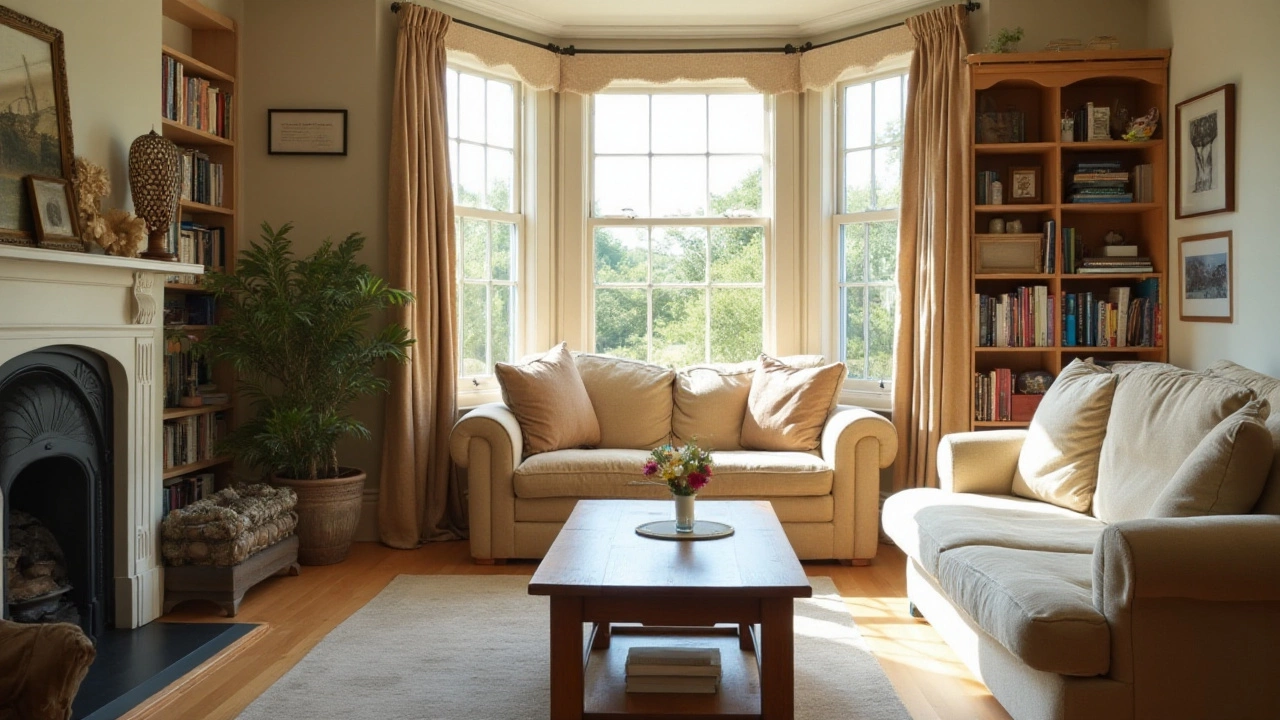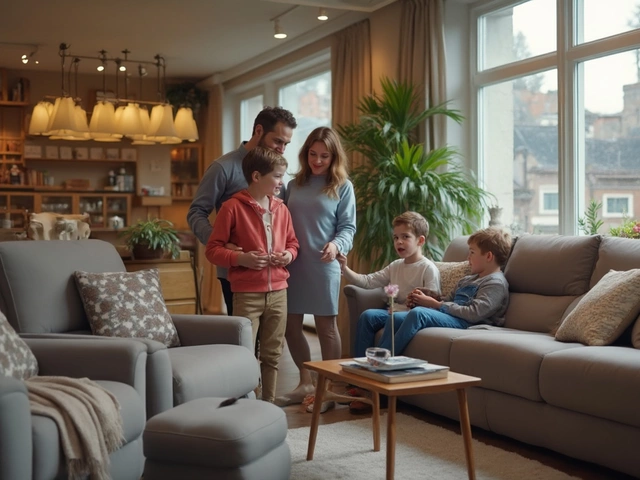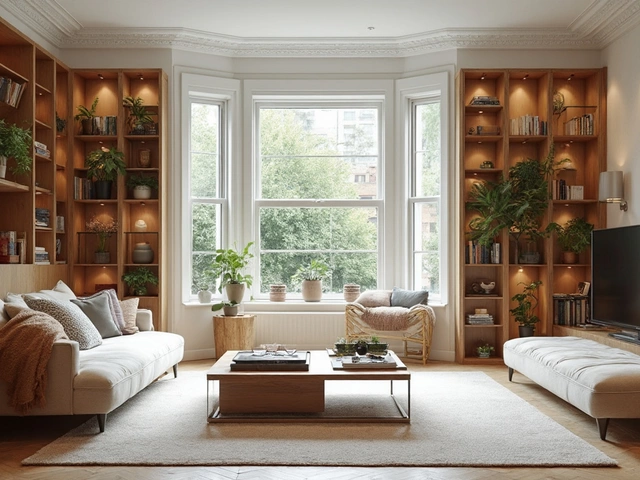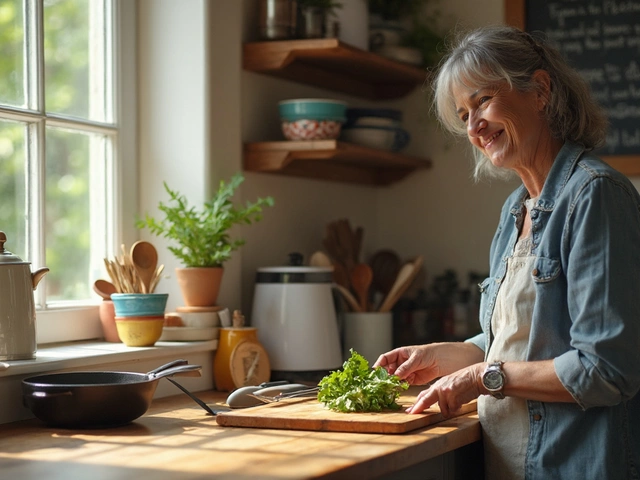Taking the first step towards organizing a cluttered home can seem daunting. But finding practical and simple solutions is within reach, even if chaos currently reigns supreme. The good news is that organizing isn't about perfection—it's about making your space work for you.
Instead of getting overwhelmed by the scale of the task, start with room-by-room strategies that break things down into manageable pieces. Smart storage options and clever organization hacks can transform your home without requiring a whole week off work. It's all about using what you have creatively and applying a few new habits to keep things tidy.
- First Steps in Decluttering
- Smart Storage Solutions
- Daily Habits for Maintaining Order
- Utilizing Vertical Spaces
- Donation and Disposal Strategies
First Steps in Decluttering
Tackling a cluttered home begins with a fundamental decision to transform chaos into calm. The first step is to create a vision of the serene space you desire, which provides motivation and clarity in your decluttering journey. Start by choosing a specific room or area that bothers you the most and focus your efforts there. It's important to see the impact of your work immediately, which can encourage patience and commitment as you extend these efforts to other areas.
Before you dive in, gather all necessary materials you might need—trash bags, boxes for donations, cleaning supplies, and labels. This readiness saves time and keeps you in the flow without unnecessary interruptions. Create three piles: one for items to keep, another for items to donate or sell, and a third for things to discard. Remember, it's not just about having less, but about valuing what you keep; this mindset shift is crucial as you move forward.
The next step is critical: eliminate distractions. Turn off your phone, play some music if that helps you focus, and let your sole mission be the methodical evaluation of each item in your chosen space. Marie Kondo, the decluttering guru, famously advised,
"Keep only those things that speak to your heart. Then take the plunge and discard all the rest. By doing this, you can reset your life and embark on a new lifestyle."This approach highlights the importance of emotional resonance with your belongings, which can be a powerful sorting tool.
Once the initial sorting is done, it’s time to think about storage solutions for the clutter-free home. Consider whether each item deserves a permanent home in the space, and how often you use it. Can you employ smart storage solutions to keep these items within reach yet out of the way? Transparent storage boxes, dividers, or under-bed storage can maximize space without requiring major changes. Labeling is invaluable—knowing exactly where to find and return an item saves time and keeps clutter at bay.
Throughout the decluttering process, remember the 80/20 rule: we use 20% of our belongings 80% of the time. This insight can guide decisions about what deserves space in your home. Also, decluttering doesn’t have to be a solitary activity. Involve family members if they contribute to the clutter; making it a collective effort not only divides the workload but also encourages everyone to maintain these newfound habits.
Finally, celebrate small victories. Each area you organize is a step towards the serene environment you envisioned. Take a moment to appreciate the transformation and recognize how it makes you feel. This positive reinforcement can make future decluttering tasks seem less daunting and more rewarding. And remember, it's not about being minimalist; it's about being intentional with what occupies space in your life.
Smart Storage Solutions
When tackling the nebulous beast of clutter, a strategic approach involving smart storage solutions can be a game-changer. Often, the problem isn't a lack of storage, but rather ineffective use of the space available. Begin by assessing your home with a critical eye, identifying under-utilized areas that could serve as storage opportunities. Consider the vertical space, frequently ignored in the quest for a tidy home. Tall bookshelves or wall-mounted units are fabulous for storing a variety of items, from books and decorative objects to less aesthetically pleasing necessities hidden in chic baskets or boxes.
Having a diverse range of storage types is also crucial. For example, ottomans with hidden compartments provide a dual function, offering seating or resting areas while discreetly storing items like extra blankets or seasonal clothing. Similarly, beds with built-in drawers can provide ample room to free up your closets. When everything has a specified place, it's astonishing how much open space can be reclaimed. A good practice is to label your storage boxes or use clear containers so that your stored items are easily visible and accessible, reducing time spent searching for items and increasing the likelihood of maintaining your organization's system.
In the kitchen, efficient storage is vital for maintaining sanity amidst bustling breakfast rush hours or during meal prep. Magnetic strips can be installed on the wall to store knives, freeing drawer space for other day-to-day tools. Another savory option is to install a pegboard which not only serves as storage for pots and pans but also adds a charming rustic aesthetic to the room. This dual-purpose approach ensures that form and function coexist harmoniously. An intriguing insight from Marie Kondo, renowned tidying expert and bestselling author, suggests that each item should "spark joy"; if it doesn't, perhaps its residency in your home should be reconsidered.
"Storage should reduce stress, not add to it. Creating innovative and accessible storage gives you more time and freedom" - Joanna Gaines, Magnolia Designer
Living areas often require innovative solutions for storing electronics and media without overwhelming the space. Multi-functional coffee tables with shelves or hidden drawers can hold remotes, game controllers, and various electronics accessories. Entertainment centers with ample space can store DVDs, gaming consoles, and speakers in a concealed manner, keeping a clean and organized look. Don't shy away from furniture that doubles as storage. In smaller spaces, a proper selection of these elements can greatly enhance the feeling of openness and reduce clutter remarkably.
Finally, remember that organization is not only about removing clutter but also enhancing your home's functionality and livability. It's about crafting an environment that soothes rather than stresses. With a little creativity and well-chosen storage solutions, each room in your home can be both beautiful and practical, reflecting your style and accommodating your life. Small adjustments can significantly impact how space is felt and used, ensuring a home that's both tidy and welcoming.
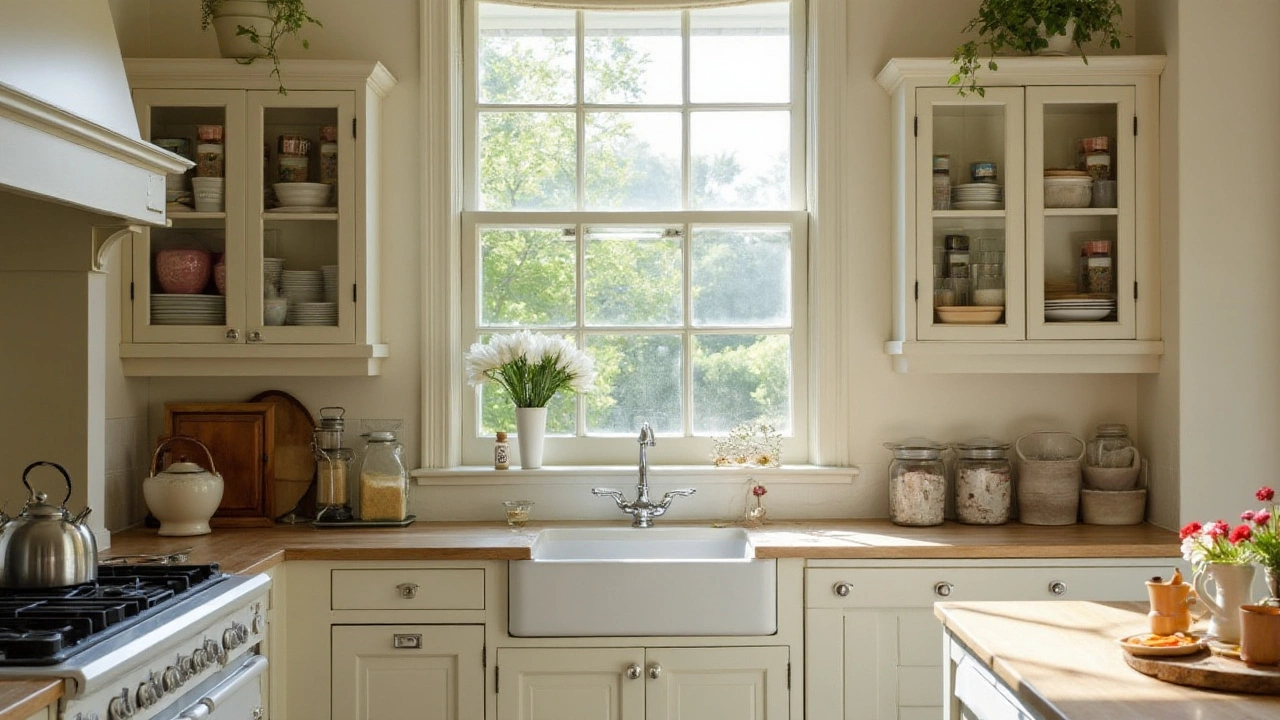
Daily Habits for Maintaining Order
Establishing daily habits is the foundation for keeping a home consistently organized and clutter-free. Often, it's the small, everyday actions that cumulatively create a significant impact on maintaining a tidy environment. One effective habit is implementing the 'one in, one out' rule. This strategy ensures that for every new item brought into the home, an old item of equal bulk or function is donated, sold, or discarded. It is a practical method for preventing accumulation, particularly with clothing and kitchen gadgets which tend to multiply unnoticed.
Integrating a brief daily tidying session can be transformative. Spend just fifteen minutes every evening to reset each room. Begin with living spaces, returning items to their rightful places. Focus on hotspots where things like mail, electronics, and random knick-knacks gather. This simple practice can prevent clutter build-up and set the stage for relaxed mornings. If you're a paper clutter magnet, use this time to handle the day's mail: recycle unnecessary flyers and neatly file important documents. This practice keeps piles from forming and knocking you off your organizational game.
Another habit worth adopting is the 'touch it once' rule. This concept encourages handling each item only once. Rather than moving your jacket from the couch to a chair and eventually to the closet, take the extra few seconds to hang it up right away. This same principle can be applied to dishes, shoes, and bags, saving time in the long run and reducing clutter chaos. Such efficiency-focused habits streamline daily life and contribute significantly to a sense of order.
Building routines around regular decluttering is beneficial. Creating a monthly schedule to comb through different areas of the home helps in staying on top of potential clutter. Pick a day each month to tackle a particular space—today, it might be the garage; next month, the attic. This proactive approach keeps messes from becoming overwhelming and allows for a constant cycle of renewal and relief. Documenting these schedules in a visual calendar can serve as a motivator and a great reminder.
Waking up and going to sleep with an orderly room is conducive to reducing stress levels. Studies suggest that environments brimming with disorder can negatively impact one's focus, attention, and overall well-being. Creating and maintaining a morning routine where beds are made, and surfaces are cleared is barely a ten-minute job but sets a positive tone for the rest of the day. At night, ensuring all belongs in their assigned place provides a sense of closure and prepares one mentally for rest.
As Marie Kondo, the organizing consultant famous for the KonMari method, once said, "Tidiness is a virtue, not just in a physical sense, but it also clears one's mind." Her approach highlights the mental clarity and joy that results from practicing consistent organizing habits in daily life.
Utilizing Vertical Spaces
Imagine walking into a room where everything has its own place, and yet nothing feels crammed. This can be achieved by turning your gaze upwards and applying the art of maximizing vertical spaces in your home. While it's easy to focus on floor-level storage, the walls around you often hold untapped potential. From installing floating shelves in your living room to introducing tall cabinets in the kitchen, going vertical is an effective solution not just for storing, but for enhancing the aesthetics of your home as well.
Vertical storage solutions are increasingly becoming essential in modern homes where space is a luxury. Unlike traditional storage methods, using vertical space can help you declutter without compromising on style. By incorporating tall bookcases, ceiling-high cabinets, or wall-mounted racks, you can efficiently organize various items, be it books, clothing, or kitchen utensils, while keeping them easily accessible. Whether you're dealing with tiny apartments or larger homes, this strategy can significantly increase your storage capacity and make your home feel airier.
When considering vertical storage, don’t limit yourself to bulky furniture. Think about innovative approaches like pegboards, which bring a customizable aspect to organizing tools and utensils, especially in the kitchen or garage. Craft rooms or offices can benefit greatly from mounted organizers, allowing you to keep essentials at arm's reach without cluttering your desk space. By doing this, you create an environment that not only feels orderly but also inspires creativity. In the words of organization expert Marie Kondo, "Tidying means taking each item in one’s hand and asking: Does this spark joy?" Her philosophy can be applied to how we choose what items to elevate in our spaces.
Integrating vertical solutions doesn't have to be a costly endeavor. Many DIY options transform ordinary walls into fantastic storage areas with minimal investment. Use versatile hooks or wire racks to hang bags or clothes; stackable crates can serve as both storage and a chic shelving unit. Moreover, repurposing existing items—like converting an empty ladder into a decorative shelf or using magnetic strips to hold metal objects—can yield both functional and eye-catching results. This budget-friendly approach to organizing can invigorate your home with minimal effort and resources.
Incorporating vertical space doesn’t just mean adding storage. Think about adding personality to your walls with artful displays or charming decorations. Hanging plants or picture frames can add a personal touch, while mirrors can create the illusion of a larger space. Always think creatively when organizing. Ask yourself which pieces of decor you’d love to showcase and which items can be stored out of sight yet remain within handy reach.
Indeed, vertical spaces offer a world of opportunities to create a clutter-free home. Their magic extends beyond mere storage, transforming how a space feels and how it functions. By thinking outside the box, or perhaps more aptly, above and beyond it, you can effectively declutter your home and simultaneously add unique elements that reflect your style and personality.
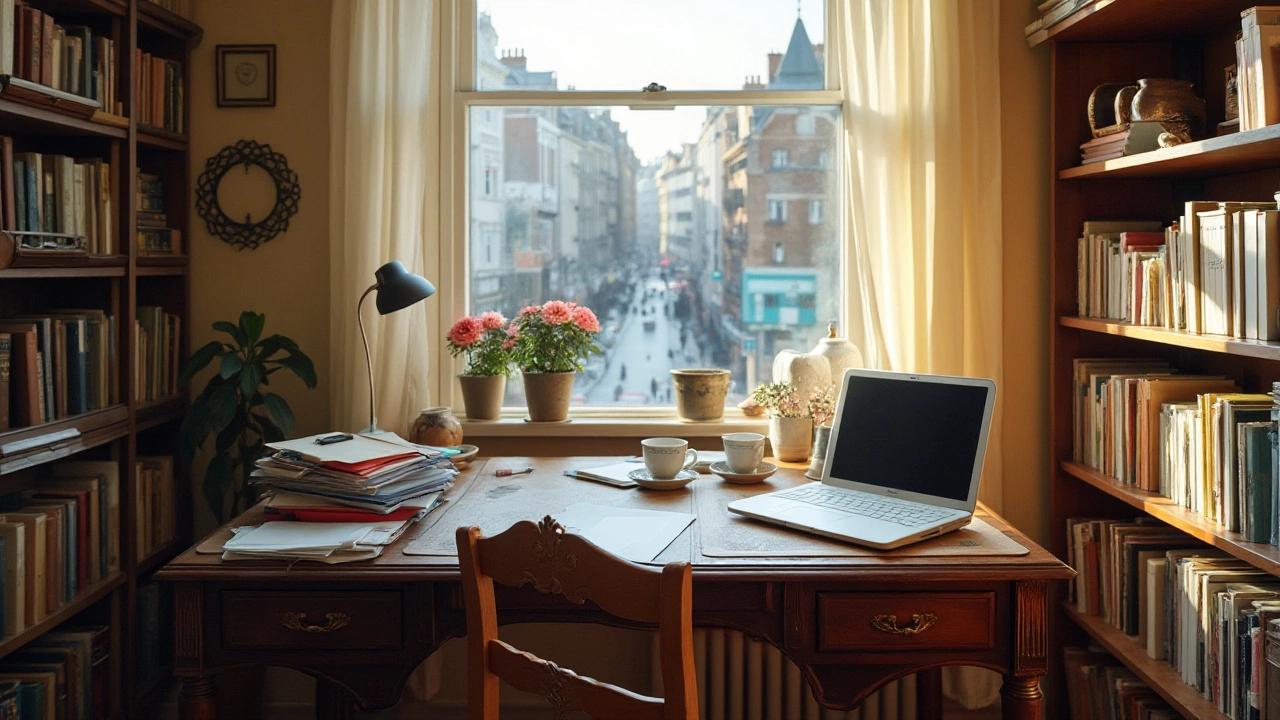
Donation and Disposal Strategies
Clearing out the clutter often involves deciding what to do with all those extra items that no longer serve a purpose in your life. This is where adopting some smart donation and disposal strategies comes in handy. Knowing what to donate, how to dispose of, and where these items can go not only helps in decluttering your living space, but also in making a positive impact on your community and the environment. To start, it's crucial to evaluate each item individually and decide if it still holds value for you, or if it might be of benefit to someone else. This process, though meticulous, can be incredibly rewarding and might even uncover forgotten treasures or unused appliances which others might greatly appreciate.
When considering donation, think about the condition of the items you're planning to part with. Charitable organizations often accept gently used clothes, toys, and household goods. Some popular options include The Salvation Army and Goodwill, known for their vast collection networks and community outreach programs. Avoid donating items that are broken or soiled, as these will likely not be suitable for resale or redistribution. Consult each organization’s website to understand guidelines and restrictions, which can save you a wasted trip and help maximize your contributions. Organizing these donations into categories can streamline the process, and labeling boxes with item types can help volunteers on the receiving end.
Disposal can be a bit trickier, especially when dealing with electronics, hazardous materials, and oversized items. Proper disposal not only keeps your home tidy but also protects the environment. Electronic waste, like old phones or broken computers, should be taken to specialized recycling centers, which ensure safe handling and recovery of reusable materials. Many tech retailers and manufacturers offer recycling programs, sometimes exchanging devices for cash rebates or discounts. Conducting a little research into local waste management services can reveal community collection events or curbside pickups specifically for hard-to-dispose-of items. For daily disposal needs, composting provides an eco-friendly alternative to waste disposal, transforming food scraps into nutrient-rich soil for your garden. As Sir David Attenborough wisely stated,
“There’s no such thing as ‘away’. When we throw anything away, it must go somewhere.”Thoughtful disposal and recycling carry significant benefits, ensuring that less ends up in landfills unnecessarily.
Finally, don't overlook the potential of online platforms to give your items a new lease of life. Websites like Freecycle or Buy Nothing groups on Facebook allow you to pass on items you no longer need directly to someone who will appreciate them. These platforms are often local, fostering a sense of community and ensuring shorter travel distances for item exchanges. Offering items for free also eliminates the hassle of haggling and negotiation, focusing instead on the recycling spirit. Engaging with these networks ensures that your efforts contribute to creating a clutter-free home while benefiting society and the environment at large. By giving your items one last purpose, you are not only helping someone else but also gaining peace of mind and living space in return.

